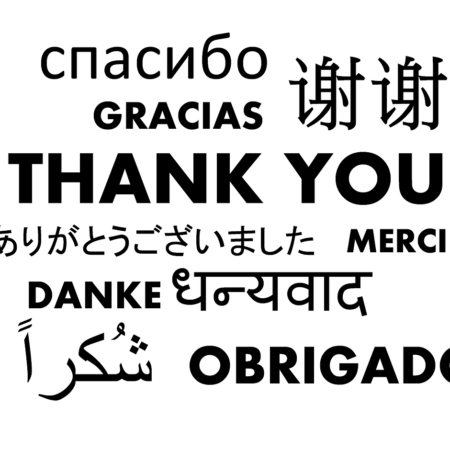
What Does “Be Present” Actually MEAN, and How Do I Do It?!
To ensure you have a positive powerful presence is a conscious choice.If you master the power of being present you will transform your personal and professional life. But what does it really mean?
Presence. Mindfulness. Alertness. A conscious effort to concentrate on THIS moment in time … a laser-like focusing on what needs your attention or a situation that needs consideration, a response.
Some believe we have to be almost superhuman to practice presence, that it’s an other-worldly ability, spiritual, commonly ascribed to yogis and other mystics. They got it wrong. Very wrong.
Presence has entered the realm of common, everyday life, accessible to anyone, no one particularly special. This is probably because we’ve come to accept that we don’t have to be anyone special to possess the power to be totally present. We don’t have to walk over hot coals, trek the desert for 40 days, or have a spontaneous spiritual awakening bestowed on us by some outside force. Being present isn’t an esoteric practice far removed from the workplace and everyday life.
So let’s examine some of the perks and roadblocks to presence and how you, a leader in the business world, can become more present … and by doing so, affect your performance and influence and feel a deep satisfaction both professionally and personally.
Presence and the Individual
On an individual level, the difference between having presence and not having it can take many forms. Zoning out vs. being focused is one of them. If presence has an opposite, it could be described as “impulse”. By being connected to what’s happening right now you are not reacting impulsively. You are searching deep down for answers that ring true to you. You are aligned with your thoughts. You feel connected.
If you’re focused on the present, you’re not worrying. You’re not anxious about what comes next, what calamity is going to occur in the future. Making a habit of looking at what comes next is exactly how you place yourself in a position of fear or apprehension; this works against you.
Having presence can help you find purpose – in your role as a leader and as an individual. Once you stop and reconnect with yourself you begin to recognize stumbling blocks to your passions and goals.
If you read about the victory stories of successful people, the common underlying theme is often making a mind shift from fear and struggle to confidence and ease. Here’s this individual who stepped outside her or his preconceived belief that they were incapable of achieving their version of success, certain desired goals and aspirations. Presence allowed them to develop clearer thinking, reduce the negative thoughts that made them their own worst enemy and set up a barrier to their success.
Relating to Others
On an interpersonal level, presence affects your ability to effectively lead others, how others relate to you. Are you paying attention completely to the person you’re talking to? Others sense when you’re not fully present, when you’re preoccupied with something else. That something else is that inner voice. You’re listening to your own thoughts instead, distracted by unrelated thoughts, mind-wandering. As a result, that person feels unheard, frustrated, diminished because your inattention reflects that they don’t matter to you.
In the workplace, that lack of presence can seriously affect worker well-being, performance, and productivity. Two studies conducted at Singapore Management University found that mindful supervisors did indeed affect employee performance. They found a direct correlation between supervisors and their employees and mindfulness. And apparently, it’s a common occurrence.
Co-authors Rasmus Hougaard and Jacqueline Carter of the Harvard Business Review book The Mind of the Leader found that 88 percent of employees believe their leaders are disengaging. Their conclusion was based on assessments of leaders and interviews with executives.
What’s interesting about the study is the disconnect between what employees say about the level of engagement between them and their supervisors and what their supervisors think. Do leaders know their employees’ sentiments about disengagement? There’s a good chance they don’t if you accept Hougaard’s and Carter’s other finding as the norm, which is that 77 percent of leaders believe they ARE engaging.
Can You Train Yourself to Be A Presence Master?
Yes, of course, you can! Here are some of the ways you can begin the process:
- Perform a body scan. How are you feeling physically? Any discomfort? Aches and pains? Tension in your neck, back? How can you alleviate those body discomforts? Could your posture be causing the aches and pains? What sensations are you able to experience? Tightness, heat, coolness, pulsing, itching, numbness, or even nausea… Connect with your body!
- Pay attention to how your body moves. Take a minute every now and then to notice the steps you take, putting something in your hand, standing still, sitting down, lying down. How do your mouth and teeth feel when you crunch down on a piece of fruit, feel the sweetness of a piece of chocolate or the heat of a pepper, swallow a cold glass of water or hot coffee? This is sometimes called “grounding.” Try it before you go into an important meeting, have an important discussion, make an important decision.
- Mindful meditation. Mindful meditation is sort of a cross between meditation and presence. This is a form of being alert and making non-judgmental observations on one’s internal experiences as they arise. A 2011 mindfulness meditation study published in Harvard Business Review found that mindful meditation can make a big change in more than eight regions of your brain.
Challenges to Being Present
When learning a new skill or trying to change your behavior, challenges are bound to occur. Let’s talk about them first before moving on to how you can meet those challenges.
Interruptions
How are you supposed to function when you’re pulled in a different direction? When you are focused and then someone knocks on your door, asks you a question, requests something your thoughts scatter like glass breaking on a hard surface. When the interruption goes away, are you able to refocus with the same intensity, clarity, motivation?
Spontaneous Unassociated Thoughts
Everyone has experienced this: You’re having a one-on-one with a colleague and suddenly an unrelated idea pops up in your mind. It’s a good idea. A great idea. You struggle to listen to your colleague and engage in the conversation but you don’t want to lose that brilliant thought … Should you interrupt your colleague? Excuse yourself for a moment to go write it down before you forget it? It’s as though your thoughts are barging in on your live conversation, as though your thoughts themselves are doing the interrupting.
Physical discomfort
Your physical body may be keeping you back. You might have a nagging headache, be tired from the stresses of the day or lack of sleep, had a reaction to bad sushi you had at lunch. Who can interact when we’re not feeling well – let alone function when left alone?
Mental discomfort
Maybe you just had a disagreement with a colleague, received a call from the principal at your kid’s school, your stock just took a dive, your blood test turned up positive for a medical condition? Some of these stresses come and go quickly; others linger. Bad news has a way of latching on and sitting in the back of your mind and when you least expect it, wham – it resurfaces with the intensity and realism of an event that had just occurred.
Both physical and mental discomfort get your attention and form wedges between you and your focus. They can feel like some invisible force is grabbing your shoulders, shaking you, saying “Pay attention to me!” Sometimes these are small nuisances. Other times, serious discomforts need to be addressed and removed before you can overcome them and be fully present.
Strategies for Regaining Presence
By accessing our own personal power, we can achieve presence, the state in which we stop worrying about what’s in the background, the impression we’re making on others, and instead adjust the impression we’ve been making on ourselves. So says Harvard professor and bestselling author Amy Cuddy. As Cuddy says in her book, we don’t need to embark on a grand spiritual quest or complete an inner transformation to harness the power of presence. Instead, we need to nudge ourselves, moment by moment, by tweaking our body language, behavior, and mindset in our day-to-day lives.
Then again, mind chatter isn’t always a bad thing. We are confronted with a tremendous amount of stimuli throughout the day. By nature, we possess active, creative minds. If we listen closely to those thoughts we might learn something about ourselves.
But shutting them off needs to be at the right time and place. We need to know what to pay attention to and how to shut off what we don’t need. When thoughts are interfering with our concentration on a task or a conversation it’s probably time to stop and practice presence.
Are you having negative thoughts? What are those thoughts? Pull out some of them and inspect them like you would an item in the produce section of the store: calmly, thoughtfully, objectively, tangibly.
When a negative or distracting event has cleared, take a moment to stop the mind chatter with a few slow, deep breaths. This is a kind of a mini meditation. Taking time to practice meditation helps you resist distractions and thereby stay present.
Do one thing at a time. It’s tempting to multi-task. Some people pride themselves on being able to juggle multiple tasks at the same time. They view it as a sign of mental agility. Don’t fool yourself. A divided mind may accomplish tasks concurrently, but quality suffers.
Set a time limit. Use a timer to allow yourself a certain number of minutes to dwell on a niggling thought. Then when the timer goes off, try to stop those thoughts. It takes practice. Reset the timer if that thought returns. You’re training your brain. It can be a slow process, but your persistence will pay off.
The task of developing presence doesn’t have to be something to take on by yourself. Help is out there in the form of a support group, counseling, self-help books and seminars, or a life coach. They can offer more exercises and keep you accountable.
Presence Payoffs
Presence offers personal and professional payoffs, as you can imagine. Although these may have been mentioned or implied earlier, I’ll spell some of them out:
- Productivity. You’ll get more done
- Decision-making. Being fully present means listening with an open mind. This is a powerful way to make decisions
- Engaging others. Your pinpoint focus will inspire and motivate others. They will enjoy working with you
- Enhanced problem-solving and creativity
- Suppressing inappropriate knee-jerk responses
- Instincts will be strengthened
- Ability to be flexible to switch strategies, if needed
- Ability to self-regulate your negative emotions
- Recharging your energy
- Improvement in brain functioning. Mindful meditation optimizes the brain. You can become smarter
Mind of a Champion
Being present boosts intellectual growth, affects the bottom line of your company, and leads to immense personal satisfaction – both for you and those around you. Leaders who don’t pay attention to this multi-faceted tool are missing the boat. Some top leaders consider it not just gratifying, but a necessity.
Presence is a tool that improves your mental agility. It’s a discipline, not something to learn and then expect to magically work from then on. The practice of presence puts your mind into training for performance on the level of an Olympic athlete. You become a leader with the mind of a champion – and because of its all-encompassing rewards, you will want to work to hold that title.









